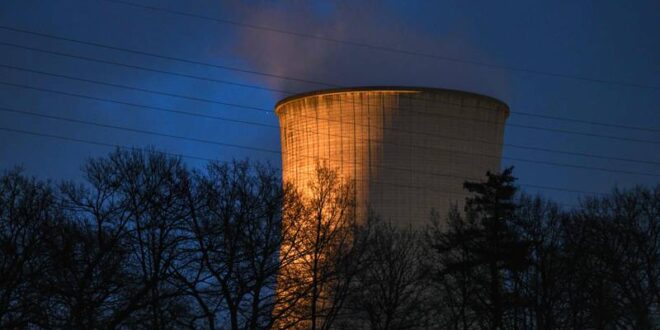The Middle East region is expressing increasing interest in developing its nuclear energy industry as the UAE and Saudi Arabia both announce new nuclear power projects. Several governments around the globe are showing renewed interest in low-carbon nuclear power as a means of shifting their reliance away from fossil fuels and supporting the security needs of growing populations while undergoing a green transition. The U.S., the U.K., and several European countries have recently announced plans for the development of new nuclear plants, building upon their existing nuclear capabilities to produce more clean energy. And now, several Middle Eastern countries appear to want to develop their own nuclear programs to ensure the future of their energy security and their contribution to a global green transition.
In the Middle East and North Africa, several Gulf states are considering, planning, or starting nuclear power programs, including Saudi Arabia, Qatar, Kuwait, and Iraq; Yemen, Israel, Syria, Jordan, Egypt, Tunisia, Libya, Algeria, Morocco, and Sudan. The nuclear energy industry in the Middle East is expanding but is still in the early stages, with the International Atomic Energy Agency (IAEA) helping several countries across the region to develop nuclear programs.
At present, there are only two active nuclear power plants in the Middle East, the Bushehr nuclear power plant in Iran and the Barakah nuclear power plant in the United Arab Emirates (UAE). Bushehr has one operational reactor, while Barakah has four. With several Middle Eastern countries committing to net-zero carbon emissions pledges for the mid-century, nuclear power presents a huge low-carbon alternative to oil and gas, which many states still rely on for their energy provision and revenue. In fact, 90 percent of the energy mix in the Gulf region comes from hydrocarbons.
The UAE is an early adopter of nuclear power in the Middle East, launching its Barakah Nuclear Energy Plant in 2019, which has a capacity of 5.6 gigawatts electric (GWe). The UAE hopes to remain a global energy leader throughout the green transition, as it diversifies its energy mix beyond oil and gas to nuclear power and a variety of renewable energy sources.
Earlier this year, the Emirates Nuclear Energy Corporation (ENEC), the body responsible for developing the UAE’s nuclear energy sector, signed three agreements with China’s Nuclear Power Operations Research Institute, the China National Nuclear Corporation Overseas, and the China Nuclear Energy Industry Corporation to increase its nuclear power capacity. The three deals include cooperation in nuclear energy operations, high-temperature gas-cooled reactors, and nuclear fuel supply and investment. The government recently pledged to increase its output of nuclear power to contribute 6 percent of its energy needs by 2050 and it expects to work in partnership with China to achieve these goals over the coming decades.
Meanwhile, the government of Saudi Arabia announced a target of 17 GWe of nuclear capacity by 2040, as it plans to accelerate the development of its nuclear energy sector. In September, Saudi Arabia announced its commitment to developing a nuclear energy program, pledging to ensure stricter regulations in the sector. Saudi Arabia’s Energy Minister, Salman Al Saud, stated that the country will work more closely with the International Atomic Energy Agency (IAEA) to undergo stricter checks in preparation for the development of its nuclear sector. Salman Al Saud stated, “The kingdom has recently taken the decision to rescind its Small Quantities Protocol and to move to the implementation of a full-scope Comprehensive Safeguards Agreement,” during an annual IAEA conference in Vienna. He added, “The kingdom is committed through its policy on atomic energy to the highest standards of transparency and reliability.”
This follows years of pressure from the IAEA to get several countries with Small Quantities Protocols (SQP) to transition to the Comprehensive Safeguards Agreement (CSA) to ensure adherence to international non-proliferation efforts. At present, Saudi Arabia has a small nuclear reactor, developed with support from Argentina, which is not yet in operation. Under the CSA, Saudi Arabia will gain access to fissile material to commence operations.
Saudi Arabia has also been focusing on attaining concessions from the U.S. to develop its nuclear energy program. It is demanding greater assistance with nuclear energy from Washington in exchange for agreeing to a normalization deal with Israel, which is being pushed by President Biden. However, Israel does not agree with this demand, worried about the risk of Saudi Arabia developing its nuclear weapons potential. Several lawmakers in the U.S. and Europe have also rejected the move.
Although slightly behind several other parts of the world, the Middle East is showing a growing interest in developing its nuclear power sector. Both the UAE and Saudi Arabia are accelerating the development of nuclear power programs, pumping a huge amount of funding into new nuclear reactors. Meanwhile, several other countries across the region are working with the IAEA to plan for the eventual development of their nuclear power programs. The development of the nuclear sector across the Middle East could help several countries remain relevant in terms of energy in a world that is gradually moving away from oil and gas.

 Iran Energy News Oil, Gas, Petrochemical and Energy Field Specialized Channel
Iran Energy News Oil, Gas, Petrochemical and Energy Field Specialized Channel



